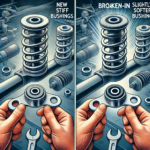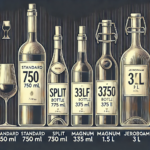How Much Are Braces? A Comprehensive Guide to Costs in 2024
Getting braces is a common solution for people who want to straighten their teeth or fix dental misalignments. However, the cost of braces can vary widely depending on several factors, including the type of braces, the complexity of your case, and your location. In this article, we will explore everything you need to know about the cost of braces, what factors influence the price, and how you can manage the costs effectively.

Types of Braces and Their Costs
The type of braces you choose plays a significant role in determining the overall cost. Below are the most common types of braces and their typical price ranges.
1. Traditional Metal Braces
- Cost Range: $3,000 – $7,500
- Overview: These are the most common and traditional form of braces. Metal braces consist of metal brackets and wires that gradually move your teeth into the desired position.
- Pros: Most affordable option; effective for most dental issues.
- Cons: Very noticeable, may cause discomfort.
2. Ceramic Braces
- Cost Range: $4,000 – $8,500
- Overview: Ceramic braces are similar to traditional metal braces but use clear or tooth-colored brackets, making them less noticeable.
- Pros: Less visible than metal braces.
- Cons: More expensive and prone to staining.
3. Invisalign (Clear Aligners)
- Cost Range: $3,500 – $8,000
- Overview: Invisalign uses a series of clear, removable aligners to straighten your teeth over time. These are a popular choice for adults and teens who want a less noticeable option.
- Pros: Virtually invisible, removable for eating and brushing.
- Cons: More expensive, requires discipline to wear aligners 22 hours a day.
4. Lingual Braces
- Cost Range: $5,000 – $13,000
- Overview: Lingual braces are similar to traditional braces but are attached to the back of your teeth, making them completely hidden from view.
- Pros: Hidden from sight.
- Cons: More expensive, can cause more discomfort.
5. Self-Ligating Braces
- Cost Range: $3,500 – $9,000
- Overview: These braces are similar to traditional braces but use clips rather than elastic bands to hold the wires in place.
- Pros: Less friction and discomfort, fewer appointments.
- Cons: More expensive than traditional braces.
Factors That Influence the Cost of Braces
While the type of braces you choose will affect the cost, several other factors can also influence how much you end up paying.
1. Location
Dental care costs vary significantly depending on where you live. In major cities or areas with a high cost of living, you may end up paying more for braces than in rural or less populated regions.
2. Complexity of the Case
If your teeth require more extensive correction, you will likely need to wear braces for a longer period, which increases the overall cost. Severe misalignment, overbites, or underbites typically require more adjustments and can raise the price.
3. Duration of Treatment
Most people wear braces for 18 months to 3 years. The longer you need them, the higher the cost of treatment will be, especially when factoring in regular orthodontist visits.
4. Orthodontist’s Experience
Highly experienced orthodontists may charge more for their services compared to less experienced practitioners. However, a skilled orthodontist can potentially reduce the duration of treatment, which can save you money in the long run.
5. Insurance Coverage
Some dental insurance plans cover part of the cost of braces, especially for children. If you have orthodontic coverage, it could significantly reduce your out-of-pocket expenses.
6. Payment Plans and Financing
Many orthodontists offer payment plans to help you manage the cost of braces. These plans allow you to spread out the payments over several months or years, making the treatment more affordable. Some providers also work with financing companies that offer loans for dental procedures.
Hidden Costs to Consider
When budgeting for braces, it’s essential to consider additional costs that may not be immediately obvious.
1. Initial Consultation Fees
Most orthodontists charge an initial consultation fee, which can range from $100 to $300. Some orthodontists, however, offer free consultations, so it’s worth asking when scheduling your first appointment.
2. X-Rays and Dental Impressions
Before your orthodontist can create a treatment plan, they will likely need to take X-rays and dental impressions. These diagnostic procedures can add $200 to $500 to the overall cost.
3. Retainers
Once your braces are removed, you’ll likely need to wear a retainer to keep your teeth in their new positions. Retainers can cost between $100 and $500, and you may need more than one, especially if you misplace or damage yours.
4. Follow-Up Visits
After your braces are removed, you will still need to visit your orthodontist periodically to ensure your teeth are staying in place. Some orthodontists include follow-up visits in the total cost, but others charge extra.
How to Save on Braces
While braces can be expensive, there are several ways you can reduce the cost:
1. Shop Around
Don’t be afraid to get multiple quotes from different orthodontists in your area. Prices can vary significantly, and you might find a better deal by comparing several options.
2. Consider Dental Schools
If you live near a dental school, you may be able to get braces at a reduced cost. Dental students, under the supervision of experienced orthodontists, often provide treatment at a lower price to gain hands-on experience.
3. Use Flexible Spending Accounts (FSA) or Health Savings Accounts (HSA)
If your employer offers an FSA or HSA, you can use these accounts to pay for braces with pre-tax dollars, which can reduce the overall cost by up to 30%.
4. Look for Discounts
Some orthodontists offer discounts for upfront payment or for treating multiple family members. It’s worth asking your orthodontist if any discounts are available.
5. Insurance Plans
Make sure to check your insurance policy for any orthodontic coverage. While not all plans cover braces, many do, especially for children and teens.
Conclusion: Are Braces Worth the Investment?
While the cost of braces can seem overwhelming, the long-term benefits of a healthy, aligned smile are priceless. Whether you choose traditional metal braces, ceramic braces, or Invisalign, the investment in your dental health is one that will pay off in terms of appearance, comfort, and function.
If you’re concerned about the cost, be sure to explore all available options, including payment plans, insurance coverage, and discount programs. Remember, your smile is an investment in your overall well-being and self-confidence.









